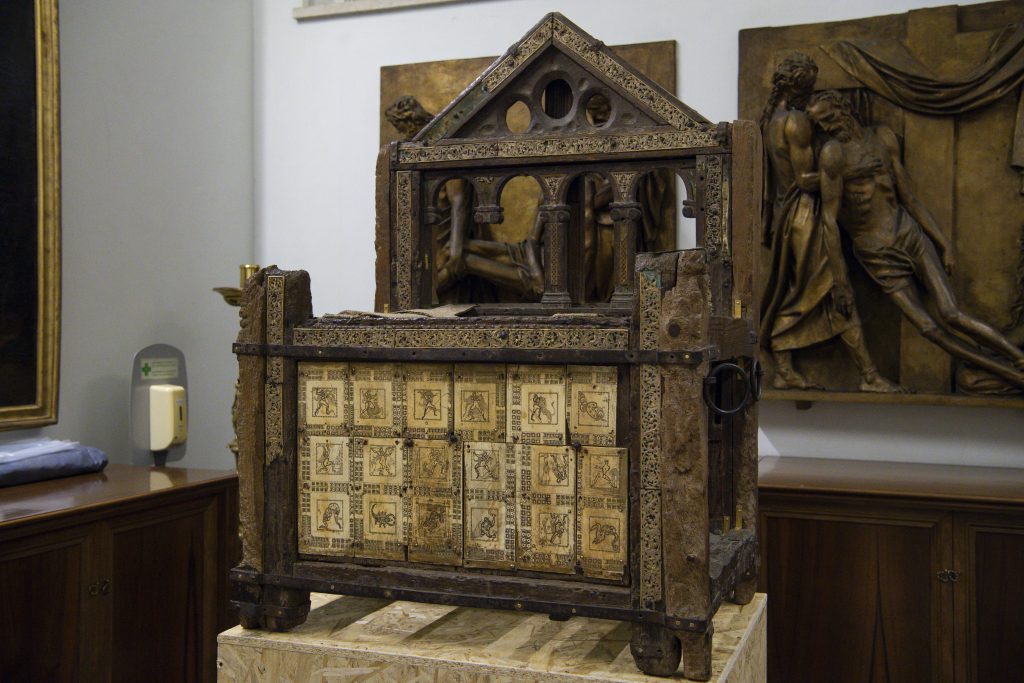The throne holds a relic considered to be Peter's true episcopal seat, decorated with ivory plaques representing the Labours of Hercules. According to some research, it may date back to the 9th century, a gift from Charles the Bald to Pope John VIII during his coronation as emperor. Other traditions, however, identify this throne as the gestatorial chair of Peter, transferred to the Vatican by Pope Damasus I (366-384) and placed in the baptistery of the Constantinian Basilica.
The heart of the Church: the throne of Apostle Petershown to the Pope

This morning, before the opening Mass of the XVI General Assembly of the Synod of Bishops, Pope Francis was able to admire an important relic: the ancient wooden throne, symbol of the primacy of St. Peter. The object was extracted during the restoration of Gian Lorenzo Bernini's monument, located in the apse of St. Peter's Basilica.
Upon entering the Basilica, the Chair of St. Peter (in Latin, Cathedra Petri) is one of the most impressive monuments. Standing 14.74 metres high and made of bronze, it was completed by Bernini in 1666, after about ten years of work. This masterpiece weighs 74 tonnes and features statues of two angels, together with the papal insignia. The alternation of colours, from dark bronze to golden, which light upwards, gives a sense of solemnity and movement, while in the centre is the throne, on which is engraved the relief of Jesus entrusting his mission to Peter: ‘Feed my lambs’ (John 21: 15-17).
The throne holds a relic considered to be Peter's true episcopal seat, decorated with ivory plaques representing the Labours of Hercules. According to some research, it may date back to the 9th century, a gift from Charles the Bald to Pope John VIII during his coronation as emperor. Other traditions, however, identify this throne as the gestatorial chair of Peter, transferred to the Vatican by Pope Damasus I (366-384) and placed in the baptistery of the Constantinian Basilica.
The throne holds a relic considered to be Peter's true episcopal seat, decorated with ivory plaques representing the Labours of Hercules. According to some research, it may date back to the 9th century, a gift from Charles the Bald to Pope John VIII during his coronation as emperor. Other traditions, however, identify this throne as the gestatorial chair of Peter, transferred to the Vatican by Pope Damasus I (366-384) and placed in the baptistery of the Constantinian Basilica.
Communicating Faith Through the Languages of the Time: Technology as an OpportunityPope Francis celebrates the closing of the Synod under the restored Baldachin. The Chair of St. Peter is on display.October 20th, Canonization of 14 SaintsRestorations Completed: Scaffolding Removed from Bernini’s Baldachin on October 27The heart of the Church: the throne of Apostle Peter shown to the PopeFor the first time two women among the Sanpietrini of St. Peter’s BasilicaSolemnity of St. Peter’s and St. Paul’s, the initiatives of the BasilicaWith Al Gore a Commitment to Climate and Children